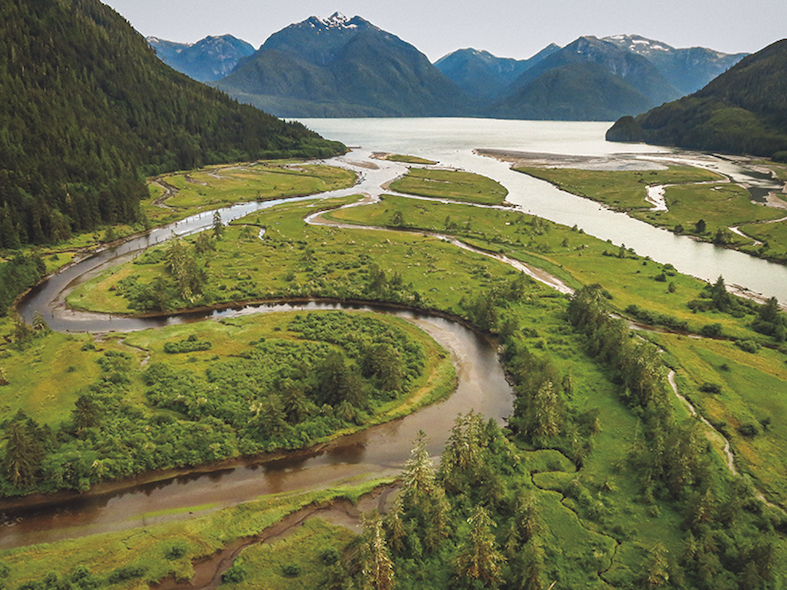1145 Great Bear diversity & antiquity
Heart of the Coast: Biodiversity and Resilience on the Pacific Edge
by Tyee Bridge, with a foreword by Nancy Knowlton
Vancouver: Figure 1 Publishing, 2020
$37.99 / 9781773271156
Reviewed by John Gellard
*
 Tyee Bridge’s Heart of the Coast, Biodiversity and Resilience on the Pacific Edge is a magnificent book — robust hard cover, excellent index. It’s a celebratory exploration of The Great Bear Rainforest, the largest tract of temperate rainforest in the world.
Tyee Bridge’s Heart of the Coast, Biodiversity and Resilience on the Pacific Edge is a magnificent book — robust hard cover, excellent index. It’s a celebratory exploration of The Great Bear Rainforest, the largest tract of temperate rainforest in the world.
Before you start the book, look at a map of the BC coast. Cast your eye on the 700 km from Quadra Island to the Alaska panhandle. You’ll see a maze of islands and inlets, and narrow valleys taking cool Pacific water 100 km inland to meet streams of melt water from the Coast Range glaciers. There are 50,000 km of coastline here, supporting more living creatures per square metre than any other place on Earth. Where else can you find another coast like this? Nowhere! Compare Norway’s fjords and the islands of southern Chile. Not even close!
“There is no such thing as the Great Bear Rainforest,” said the BC government and the timber merchants who had their eye on the old growth cedar, spruce and fir. They called it the “Mid and North Coast Timber Supply Area,” but the environmentalists fresh from Clayoquot Sound victories prevailed. The name “Great Bear Rainforest,” invented in 2006 by Peter and Ian McAllister, was inspired by the ubiquitous Grizzly, the white Spirit Bear (a mutant of the Black Bear), and the Ursa Major constellation that includes the North Star. In 2016, 85 percent of this forest was saved from clear cutting, the Northern Gateway pipeline was stopped, and the Grizzly trophy hunt was outlawed.
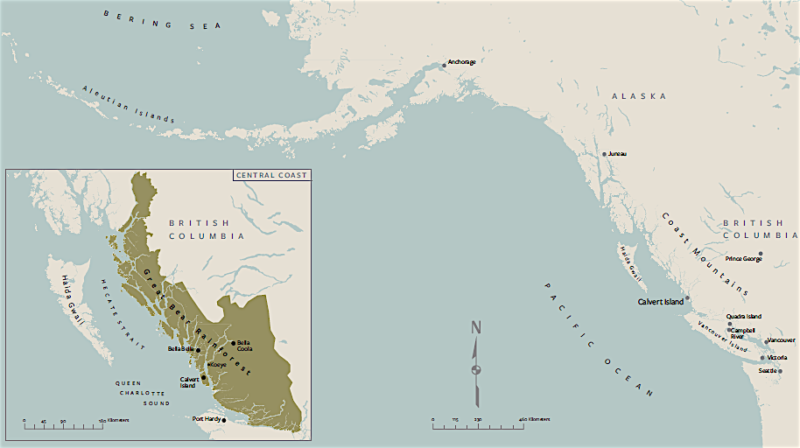
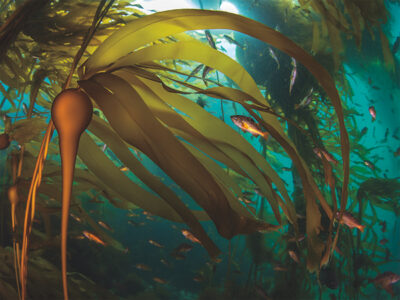
To whet your appetite for a demanding text that describes in fascinating detail the ecosystems of the Great Bear, flip through the book and feast your eyes on the 250 vivid well-captioned colour illustrations including aerial landscapes, ochre and purple sea stars, schools of fish, strangely shaped zooplankton, insect collections, kelp forests, fish weirs, and “bioblitzes.” A cornucopia of life.
You might want to look at some of the mythology and folklore that emerged after the name change. One jaw-dropper of a book is In the Valleys of the Noble Beyond: In Search of the Sasquatch [Greystone Books, 2019, reviewed here by John Gellard], by John Zada, who explores the coast for a couple of months meeting fascinating people and gathering Sasquatch stories. No, he does not actually see a Sasquatch. You will not meet one in Heart of the Coast either. This is a scientific book about things like ecosystems, trophic cascades, keystone species, discoveries of creatures new to science, and the effects of climate change.

Focus on Calvert Island, remarkable for its biodiversity, 50 km north of Cape Scott. Here we have the Calvert Island Ecological Observatory, established in 2009 by the Hakai Institute, an outgrowth of the Tula Foundation of Eric Peterson and Christina Munck, supported by the sale of their Mitra diagnostic imaging company in 2001.
Hakai recruits scientific partners to investigate biodiversity. “We’ve taken a tearoom approach,” says Peterson,… “throwing people together so they can naturally interact.” Heart of the Coast “will showcase stories and snapshots…of the amazing diversity and resilience of the Central Coast and beyond.”
And now let’s travel around with the Hakai people, look at some of the “snapshots” and gain some insights.
Those who think there is “no such thing as the balance of nature” need to find out about ecosystems, keystone species, and trophic cascades.

An ecosystem is a geographical area where plants, animals, other organisms, and weather work together to form a thriving biodiverse community. The idea of the “keystone species” was invented by biologist Robert Paine. Read about his experiment with starfish in Makah Bay, Washington. Think of an ecosystem as an arch with a central wedge-shaped stone at the apex holding it together. Remove this keystone, and the arch collapses. In an ecosystem, the “keystone” might be a top predator that controls other species. Remove that predator and the “arch” collapses in a “trophic cascade.”
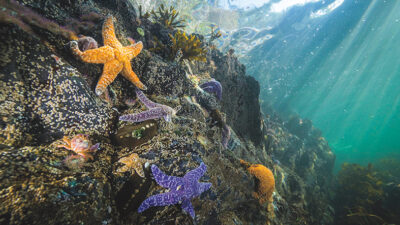
In the Great Bear, one keystone species was the sea star. Many kinds of starfish feasted on sea urchins in a lush kelp forest. Along came the mysterious sea star wasting disease (SSWD). The sea stars died. There was a trophic cascade whereby sea urchins multiplied out of control and consumed the kelp, creating “urchin barrens” and destroying habitat for other marine species.
In places where the once extirpated sea otters are making a comeback, they eat the sea urchins and bring them once more under control. The kelp habitat returns. So would the sea otters be the new keystone predator? Read the book and get the details.
There’s a similar relationship between otters and eelgrass, an important seaweed giving food and shelter to countless animals. An adult dugong can eat 40 kg a day. Higher temperatures cause suffocating algae which are cleaned away by little sea slugs. Trouble is that rock crabs eat the sea slugs and the algae smother the eelgrass. To the rescue come the sea otters who eat the crabs and let the slugs do their work. It’s more complicated than that, of course. “Everything is connected.”
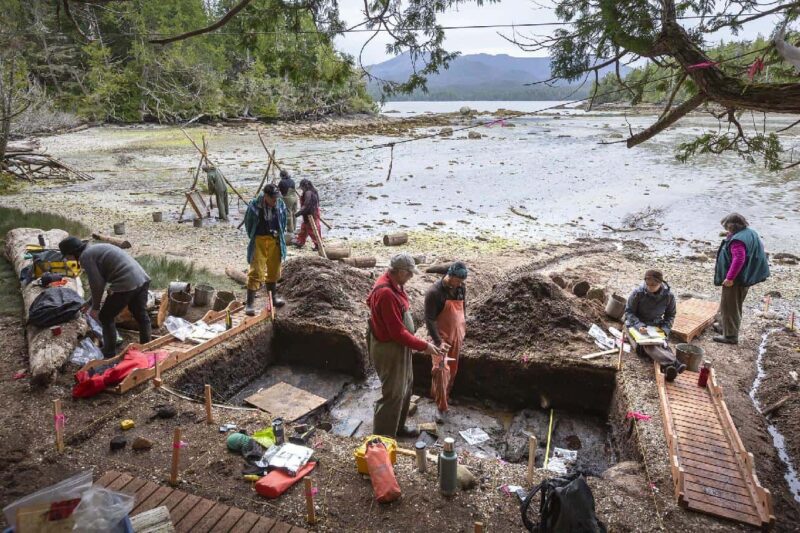
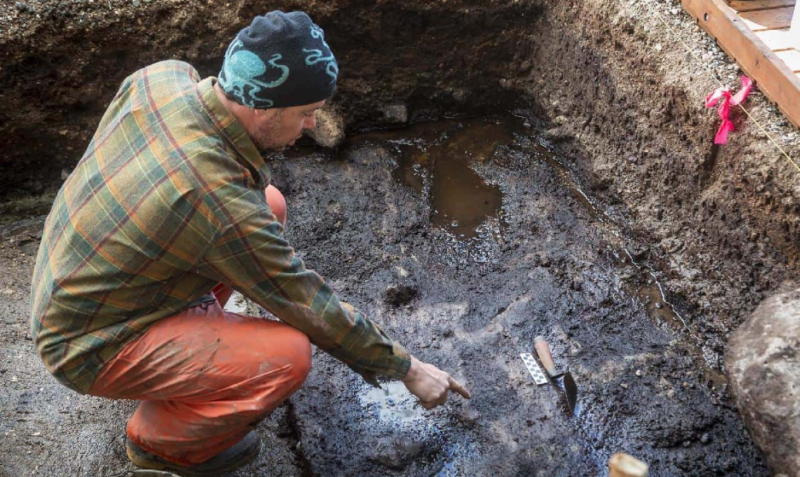
Snapshot: “Deep time: footprints of the past.” Read about the 13,000 year old human footprints on Calvert Island. How did archaeologist Duncan McLaren and his team find them and date them? How did the string of islands on the coast escape being covered by the Cordilleran ice sheet? Were the islands a migration route or a permanent settlement? Read the fascinating story.


Snapshot: “Marine Subsidies.” How do marine and terrestrial ecosystems enhance each other? We know how salmon migrations help the forests. Far up the river valleys, bears capture the salmon and the carcasses fertilize the trees which in turn enhance the spawning grounds.
Look at the remarkable case of the Goose Islands, 10 km out from Calvert. Brian Starzomski found a thriving community of wolves there. What did they eat? It turns out that black tailed deer came to the islands and reduced the thick vegetation to mossy woodland. Then the wolves came and exterminated the deer. What then?
The wolves turned to the sea and made a healthy diet of clams and squid. The forest thrives on the leftovers.
Another subsidy from the sea is “sea wrack.” Bull kelp dies and washes ashore. It supports small crustaceans – food for bears and wolves. Hakai researchers learn much from analyzing sea wrack.
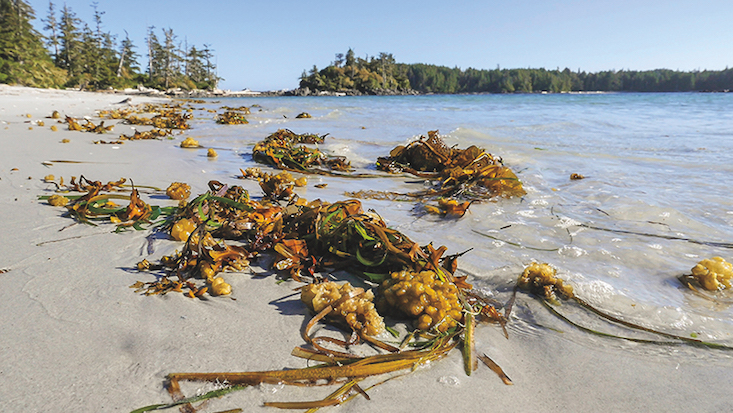
Snapshot: “The Blob.” In spring, 2016, Brian Hunt looked from his seaplane window and saw “an enormous milky cloud in Queen Charlotte sound.” It was a massive bloom of single celled calcite producing organisms, a sure sign of ocean warming. The marine heat wave called “The Blob” involved 9 million sq. km of ocean off the Pacific coast. It was caused by a “Ridiculously Resilient Ridge” of high pressure which prevented deep cold water from welling up. Such warming causes “a negative series of occurrences … toxic algal blooms … altered spawning behaviour … starvation … and a devastating outbreak of SSWD.” It caused the collapse of the Rivers Inlet sockeye run in the 1990s.
It’s important to understand that “unusual oceanographic conditions are going to present serious and ongoing challenges.” Understanding is what the Hakai Institute is all about.
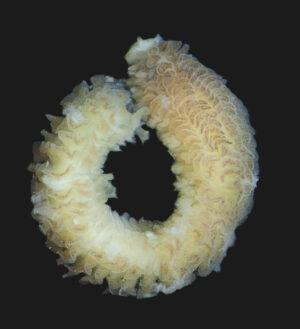
Snapshot: “The Joy of Bioblitzes.” In the summer of 2017, two dozen scientists participated in the first Hakai-Marine Global Earth Observatory bioblitz: “researchers poking around in tide pools, drawing up buckets of critter filled seawater, scuba divers plucking up crabs and sea cucumber…peering into microscopes…sometimes [thrilled to encounter] species never before recorded by science.”
Pictures and descriptions of the “critters” are breathtaking. There’s the frilly Desi Arnaz worm named by Leslie Harris, a comparison of the genetic codes of two tiny crabs, and fascinating insect collections. The Central Coast is truly a “cold water hotspot of biodiversity” and it’s an urgent matter to archive information before it disappears. It’s like “saving pages from a burning library.”
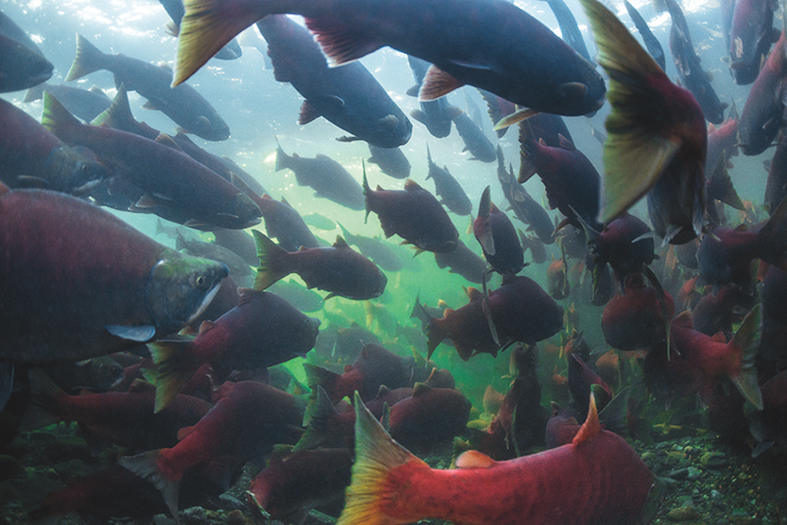
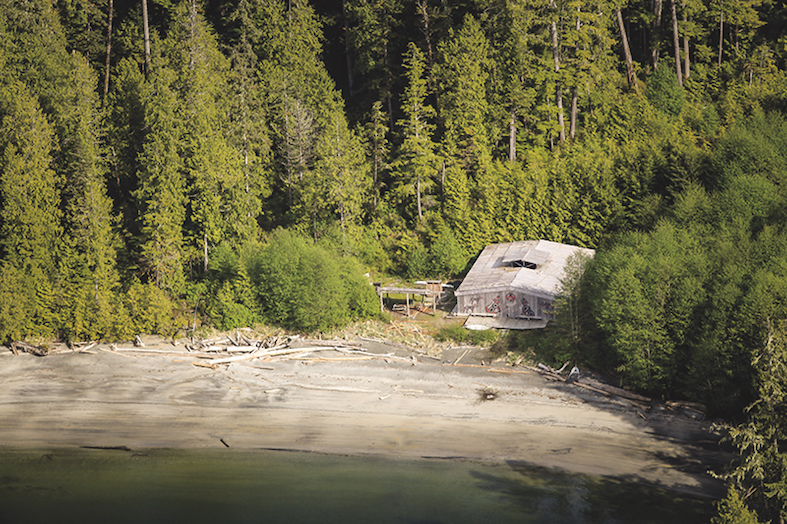
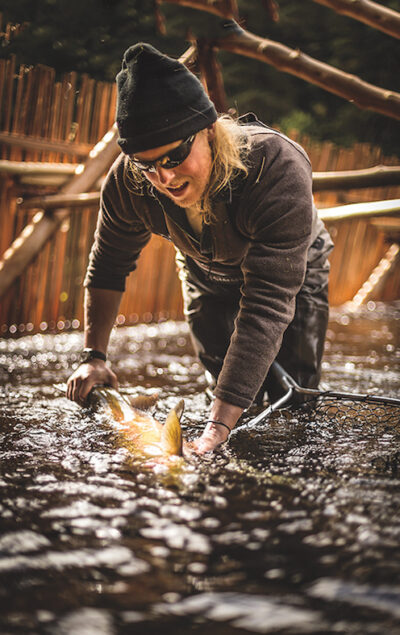
Snapshot: “Learning from the Koeye.” The 18,000 ha Koeye watershed is “one of the jewels of the coast,” says Christina Munck. This excellent salmon river starts in Koeye Lake and emerges by Calvert Island. Hakai helped with the building of the “Big House,” a centre of First Nations education run by the Qqs Projects Society.
Most remarkable is the fish weir, a fence built across the river with poles spaced to trap fish of a certain size. It’s a traditional Heiltsuk way of fishing, now used for research – trapping and tagging salmon. It’s a good Hakai-Heiltsuk collaboration.
Let’s give the last word to zoologist Gustav Paulay, who called Calvert Island “a biologist’s dream.”
“We live at a strategic time. Humanity is messing with the planet on an unprecedented scale…Our greatest impact by far will be the loss of biodiversity …millions of years of accumulated evolutionary innovation. Think of it as the greatest of all libraries burning down!”
And think of Heart of the Coast as a heroic effort to archive the information before it disappears.
*
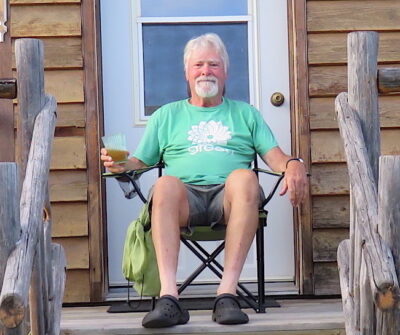
John Gellard spent his childhood in England and Trinidad, donated his adolescence to an English boarding school, earned an MA in Philosophy from the University of Western Ontario, and taught English and Drama in London, Ontario, for seven years. In 1973, he arrived in the West Kootenay where he felled and peeled pine logs on his “wild land” property and built a log cabin. Gravitating to the city, he taught for thirty years at Vancouver Technical Secondary School and Kitsilano Secondary. He still helps run writing workshops for students, notably (since 1993) an annual overnight retreat on Gambier Island. His articles have appeared in the Globe and Mail and Watershed Sentinel. He takes an active interest in environmental issues and travels extensively in B.C. He lives among friends in Kitsilano and on Hornby Island, has three grandchildren, and retired from teaching English and Writing at Kitsilano Secondary School after being named Canada’s “Best High School Teacher” in a Maclean’s poll in August 2005. Editor’s note: John Gellard has recently reviewed books by Alice de Wolff & Delores Broten, Claudia Cornwall, Dimitri Bayanov, John Zada, Frank Wolf, Wendy Holm, Sarah Cox, and Eileen Pearkes for The Ormsby Review.
*
The Ormsby Review. More Books. More Reviews. More Often.
Publisher and Editor: Richard Mackie
The Ormsby Review is a journal service for in-depth coverage of B.C. books and authors. The Advisory Board consists of Jean Barman, Wade Davis, Robin Fisher, Cole Harris, Hugh Johnston, Patricia Roy, David Stouck, Maria Tippett, and Graeme Wynn. Scholarly Patron: SFU Graduate Liberal Studies. Honorary Patron: Yosef Wosk. Provincial Government Patron since September 2018: Creative BC
“Only connect.” – E.M. Forster
